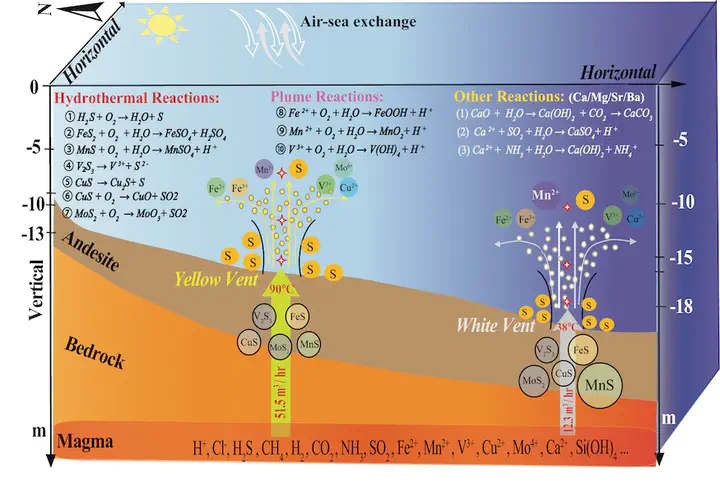4. Transformation, Fluxes and Impacts of Dissolved Metals from Shallow Water Hydrothermal Vents on Nearby Ecosystem Offshore of Kueishantao (NE Taiwan)
 Image credit: MEIKANG
Image credit: MEIKANG
Abstract
Hydrothermal vents are one of the important sources of major or trace elements in the ocean. The elemental fluxes, however, may be dynamic due to coastal processes and hydrothermal plumes, especially in shallow-water hydrothermal vents. We collected water samples by using the trace-metal clean technique inside and outside two shallow-water hydrothermal vents (white vent low temperature, high pH; and yellow vent high temperature, low pH) off Kueishantao Islet, Taiwan, China via SCUBA divers. We analyzed these samples for their hydro-chemical parameters and dissolved elements (Fe, Mn, Mg, V, Cu, and Mo) thereafter. Our results show that dissolved metals’ concentrations were significantly different between the two vents, with higher Mn and Fe in the White Vent than in the Yellow Vent, likely due to the decreased affinity of the dissolved metals for particles in the white vent. We estimated the plume fluxes of dissolved metals from the hydrothermal mouth by multiplying in situ hydrothermal discharge flowrates with metals’ concentrations inside the vents, which were 1.09~7.02 × 10^4 kg Mg, 0.10~1.23 kg Fe, 0.08~28 kg Mn, 33.4~306 g V, 2.89~77.7 g Cu, and 54.3~664 g Mo, annually. The results further indicate that such plumes probably have impacted nearby seawater due to coastal currents and particle desorption during transport. Furthermore, the concentrations of biogenic elements could be further modified in seawater, and potentially impact nearby ecosystems on a larger scale. Our study provides information with which to further understand metal redeployment in submarine shallow nearby ecosystems.